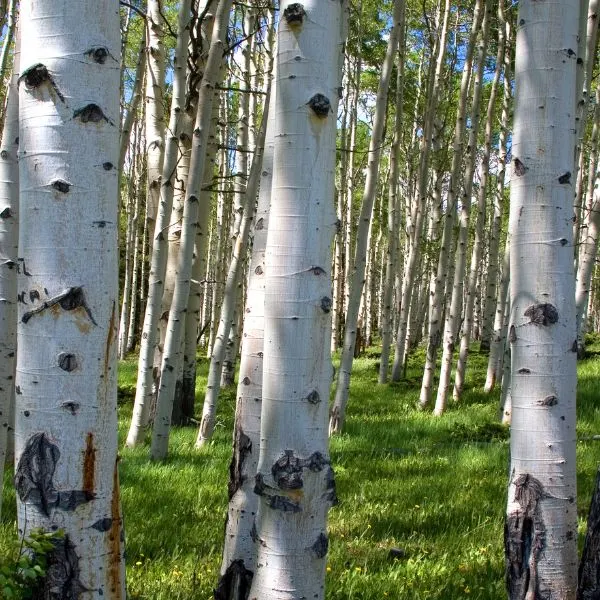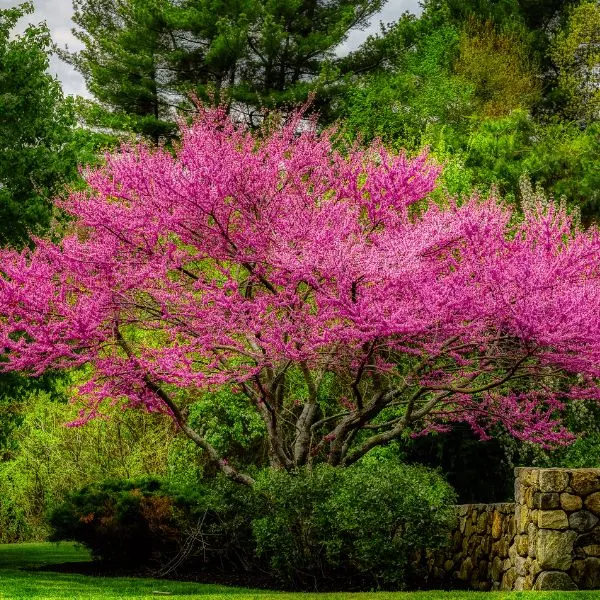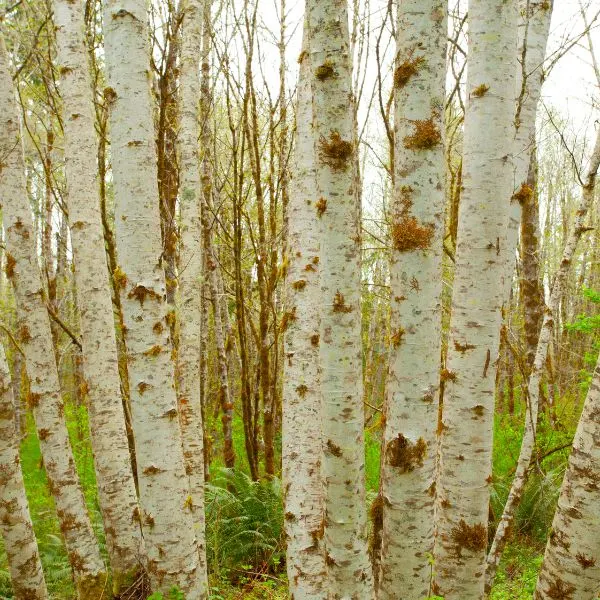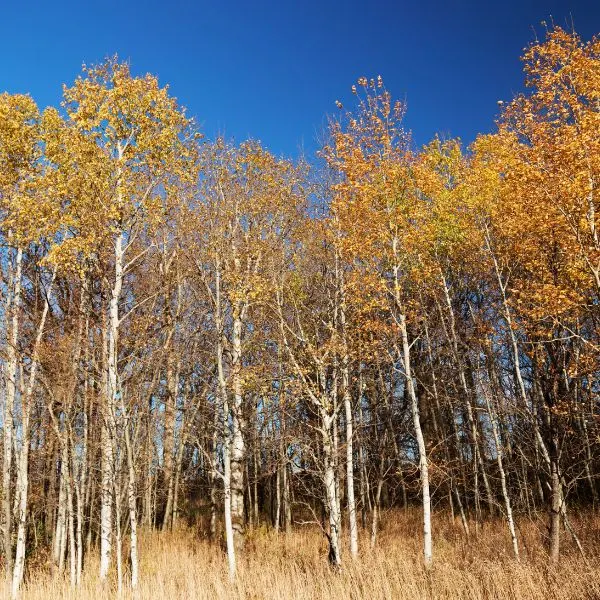Poplar and Birch, two iconic deciduous trees native to cooler climates such as native Alberta, British Columbia, and Manitoba plants, are likely familiar sights if you’ve spent time in the Northern Hemisphere or dabbled in woodworking. In today’s article, we’re going to compare the Birch Tree vs Poplar Tree in depth.
We’ll give you a comparison of their traits, craft uses, care, and considerations if you are considering raising them locally or simply love knowing more about your favorite trees.
So, how do they compare? Let’s begin our journey in Poplar vs. Birch: A guide to ‘Getting your Grove on’ and you can see for yourself!
Table of Contents
Birch Tree vs Poplar Tree
For privacy, a hybrid superior poplar will grow 5 to 8 feet per year, and the dense branch formations will still be there to shield you once the leaves drop and fall. If you live in an area that gets a lot of storms, however, then a river birch is a better choice, but keep in mind it will grow in at a little over a foot to 2 feet per year.
For DIY enthusiasts seeking a medium-sized tree that grows quickly, poplar is a prime candidate for furniture-making, including poplar plywood, while the hardy birch, especially species like paper birch and yellow birch, offers a denser wood perfect for durable flooring.
Out of the pair, poplar is also the lower-maintenance option, just be sure not to plant it any closer than 20 feet to your home as its roots are invasive and may damage your home’s foundation.
The Main Differences between Poplar and Birch trees
Both birch and poplar trees, with their distinctive bark and reproductive parts, stand as beautiful trees and ornamental accents in diverse geographical regions, from the rocky mountains to the vast forests of native North America plants. Birch, with its unique-looking bark and smooth bark adorned with horizontal scars, contrasts sharply with the broad canopy and pioneer species status of poplar trees.
In order to start our comparison of these trees, we’ll begin with some of their most obvious contrasts. After we’ve gone over those, then we’ll go into some of the pros and cons of these trees for those who are considering raising one or both species to add a touch of the Northern nostalgia close to home.
Some of the key differences between Poplar and Birch trees include the following:
- Birch trees are considered short-lived, with an average lifespan of 60 to 90 years, although some may grow to be as old as 150! By contrast, Poplars tend to live a much shorter 50 years before you’ll need to replant your grove.
- Poplars can grow 3 to 5 feet every year, while Birch trees only grow approximately 1.5 to 2 feet in that time.
- While fast growing, Poplar wood is less dense than the slower-growing Birch.
- Birch trees may reach heights of up to 70 feet tall, with a 35 foot spread, while Polars may grow between 50 and 150 feet tall, although typically they’ll be in a range of 50 to 80 feet and have a spread of 30 to 50 feet.
- Birch leaves tend to be oval or elliptical, while Poplar leaves may be heart-shaped, triangular, or rounded.
- Poplar trees have smoother bark, which tends to start as white, darkening to gray or black and developing ridging as the tree matures. Birch trees are decidedly more marked, with horizontally-aligned lenticels and paper-plate ridges, as well as yellow, gray, or silverish coloration. Like Poplar, they are smoother when young, but gain definition at a much faster pace than Poplars.
Key Features: Poplar

A member of the Salicaceae family, better known as ‘Willows’, there are approximately 35 species from the genus Populus that you’ll find in the Northern Hemisphere. Let’s look at some key identification features and care concerns for these trees:
- Poplar leaves may be triangular, heart-shaped, or rounded, and typically measure up to 6 to 7 inches in length.
- Flowers in the spring are tulip-like and will be greenish-yellow, turning a richer yellow or even golden in the fall. While some species will have both male and female flowers, most Poplars will have one or the other, with the female flowers being more elongated in appearance than the males.
- While short lived, these are fast growing trees, typically ranging between 50 to 80 feet tall with a 30 to 50 foot spread.
- Smooth, white bark is common with younger Poplars, while older ones will have more defined ridging and a gray or black cast to the bark.
- Poplar thrives in loamy soils, with humus and light clay to provide a good grip for securing its roots.
Pros
- Tall, stately, and colorful from spring to fall, poplar trees definitely add an appreciable aesthetic impact to any environment.
- For woodworkers and DIY types, the fast growth of these trees are a definite plus.
- Poplar trees are low maintenance and while short-lived, tend to be quite hardy for the 50 years that they can last.
- Local wildlife tend to love these trees as well, which is another definite point in their favor.
Cons
- 50 years is not a very long life, especially for trees, and this may discourage some from planting Poplars,
- Poplars have an invasive root system, so they cannot be planted close to foundations or sidewalks.
- While the trunks are solid, the branches are not as durable and can break easily.
Key Features: Birch

From the family Betulaceae and Genus Betula, Birch comes in 40 different species and also occurs primarily in the Northern Hemisphere. Some key features for identifying and caring for Birch trees include the following:
- Birch leaves are elliptical or oval in shape and may grow up to 4 inches in length.
- Birch trees flower in the form of catkin clusters which are yellowish in color, and male and female flowers will be present on the tree. Male flowers hang down, while the female flowers will display upright.
- The trees typically live from 60 to 90 years, although some may reach as many as 150! Fully-grown, they average a height of up to 70 feet with a spread of 35, but as they only grow 1.5 to 2 feet in a year it takes a long time for them to reach these heights.
- Birch bark may be yellow, gray, or silverish, and starts off smooth, but quickly gains deep definition in the form of horizontal lenticels with heavy, paper-plate ridging as it ages and hardens.
- Birch prefers aerated soils with excellent drainage and slightly on the acidic side, with a pH of 5-6.5 being just about perfect.
Pros
- While not as fast-growing as Poplars, Birch trees are considered rapid growers at 1.5 to 2 feet annually.
- DIY types covet Birch wood, as it is quite dense and often used to make beautiful, solid flooring.
- The white bark and lovely yellowing of leaves in the autumn make Birch trees quite the attractive option to host near your home.
- Birch trees are adaptable to a wide range of soils.
- Wildlife are attracted to these trees, both as a food source and as a habitable shelter.
Cons
- Averaging 60 to 90 years for their lifespan, Birch trees are considered short-lived and this is a consideration for those hoping to plant a ‘generation-spanning’ grove.
- Birch trees need a lot of light and they are not drought-tolerant – in fact, they tend to be very greedy with water.
- Susceptible to aphids, they can get a bit messy from honeydew drippings, and they are also vulnerable to Birch Borers and Birch Leaf Miners – making them a little more work to maintain.
Alternatives to Poplar and Birch trees
You’ve always got choices when you are deciding on the perfect trees for a spring planting and in this section, we’ve compiled some nice alternatives that you can use. We’ll tell you a little about each so that you can keep your options open or diversify your grove-planning just a little bit!
Crapemyrtles

Short, but sweet, Crapemyrtles are a fine addition to any grove or garden, with lovely bark that combines tans, browns, and even pinks! These lovely trees come from Southeast Asia, but you can find hybrids that will do well in cooler climes, and while they are on the short side at around 25 feet fully-grown, they’ll flower nicely in the late summer to early fall. Flower colors include white, lavender, pink, and sometimes deep reds!
Eastern Redbud

Eastern Redbuds also top out at 25 feet, making them an ideal choice if you have a smaller garden, and in the spring, they’ll produce tiny, peabud flowers in a lovely shade of pink. They prefer to be hosted in a moist soil, so if it gets very warm in your location then you’ll need to make sure that they are properly irrigated so that they can thrive.
Red Alder

If you’ve got soil that is less than ideal, then you might consider hosting the Red Alder in your garden or grove setup. These hardy trees actually harbor Frankia alni bacteria in their roots, which boost nitrogen levels in the soil to encourage healthy growth.
Like our previous two trees, these are on the short side as well, with an average height fully-grown of 25 feet, and they will flower with catkin clusters whose seeds are highly desired by Chickadees, Goldfinches, and many other birds!
Quaking Aspen

A member of the Populous family, Quaking Aspens can grow to be up to 50 feet tall, and have beautiful white trunks, much like you get with Birch trees. The leaves are small and will yellow nicely in autumn, and are also quite attractive to Sphinx moths, as well as both Viceroy and Swallowtail butterflies. Along with this, many birds love Aspen seeds, making these trees a good choice for a modestly-tall tree and a wildlife attractant.
Japanese Stewartia

The Japanese Stewartia has fantastic bark, which is buff and reddish brown, and displays underneath peeling surface layers to your delight in the springtime. By fall, you’ll see oranges and purples displayed on that same bark, and these trees have a mature height of around 40 feet at the most – making them a good fit for many locations near your home.
As far as flowering, you’ll see that in the summer, when the Stewartia produces lovely white blooms which are similar to camellias and attractive to bees, who are quite fond of its pollen.
Stewartias prefer a soil that is moist, but also should have excellent drainage in order to avoid root-rot.
Tips to help finalize your decision
- Popular is shorter-lived, but much lower-maintenance than Birch
- For DIY types, Birch grows more slowly, but you get a denser wood, whereas Poplar will grow quickly and produces a furniture-grade wood fairly quickly (up to 5 feet per year!)
- Birch is good for privacy, although it should not be closer than 20 feet to your home or a fence, as aphids and their honeydew-drippings can be rather messy.
- Poplar makes a great wind-block, but with the invasive roots it should be at least 50 feet away from your home and no further than 200 feet away for best results.
FAQ
Now that you’ve gotten a crash-course on the subject of Poplar vs Birch Trees, we’ll touch on some frequently asked questions about both to help fill in some of the blanks that we might have missed.
What is the best poplar tree for privacy?
For privacy in colder climes, The Lombardy poplar is an excellent choice. The branches grow together in a dense formation, so while it will still lose its leaves eventually, you’ll still have plenty of nice cover. The Lombardy also grows a little faster than other poplars, typically growing at a robust rate of 5 to 6 feet per year!
Aside from the Lombardy, Superior Hybrid poplars are also an excellent choice, and they grow even faster at 5 to 8 feet per year! The hardy hybrids will also grow just about anywhere in the United States, barring the hottest parts of Florida or Texas or the coldest spots in Minnesota.
Which is stronger, poplar or pine?
Poplar wood is a popular choice for furniture for very good reasons, one of which is that it has higher compressive strength and it’s also much more flexible than soft pine.
Is poplar wood valuable?
Actually, yes, as a timber tree, poplar wood is a valuable asset as it can grow fairly quickly within 25 to 30 months, without producing extra limbs so that it’s easy to process and put to use. Despite growing so quickly, poplars produce strong, flexible wood, making them quite popular for gardeners that also do a little hobbyist DIY on the side!
Are birch trees strong in storms?
If you get a lot of storms in your area, then River Birch is one of your best planting options. This variety is very resistant to storms and the winds that typically accompany them, as the branches tend to flex and bend, rather than simply break.
Do birch trees repel mosquitoes?
Yes, actually, birch trees repel mosquitoes naturally by the means of the resin in their bark. The tarry resin is a natural mosquito repellant and some folks will put a little Birch bark in a mason jar, topped off with tin that has some holes punched in it, and simply place it on an outside table to keep the buzzy pests at bay.
Where is the best place to plant a birch tree?
Considering the various species and the deciduous type of tree you’re interested in, whether it’s for shade, ornamental use, or even birch syrup production, selecting a site with enough space for mature trees to reach their maximum height is crucial.
The best location is usually going to be a spot to the north or east of your home, that way they’ll get at least 6 hours of full sunlight, and sufficient shade later in the afternoon.
Some final words on poplar and birch trees
Both birch and poplar trees offer a range of benefits from their fast growth as shade trees to their distinctive bark and foliage features. Whether you’re drawn to the elegant white trunk of birch trees or the robust, fast-growing nature of poplar species, your choice will undoubtedly contribute to a lush, vibrant landscape.
So, there you have it! Today we’ve discussed the pros and cons of both poplar and birch trees so that you’ll have the facts that you need if you would like to add one or both to your gardens or groves.
While they are both good for privacy and shade, each has some specific perks that they bring to the table, such as the mosquito-repelling properties of Birch and poplars’ lovely spring flowers.
Poplar, for DIY types, can provide privacy, shade, and quick wood for projects, while Birch can provide denser wood for flooring and other projects that need something a little more robust.
Both trees are excellent for attracting wildlife, but don’t forget that there are smaller alternatives such as Japanese Stewartia and Eastern Redbud if you need a nice tree that won’t take up so much space.
Whatever you choose, both poplar and birch are nostalgic northern favorites that you can’t go wrong with — sure to bring shade, beauty, and DIY practicality to your yard for many years to come!
More garden stuff

Vicki
Monday 24th of April 2023
Awesome.. I love trees.. I want them to sing and dance. Evade humans.. Maybe one day. Tree's love me